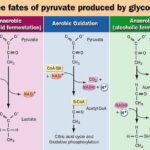how the de-novo pathway and salvage pathway
how the de-novo pathway and salvage pathway
Please login to submit an answer.
de novo pathway synthesizes nucleotides from simple precursors without using free bases
purine de novo synthesis begins with ribose-5-phosphate converted to phosphoribosyl pyrophosphate (PRPP) then to 5-phosphoribosylamine by glutamine-PRPP amidotransferase and proceeds through nine enzymatic steps to form inosine monophosphate (IMP) which is then converted to AMP and GMP
pyrimidine de novo synthesis starts with carbamoyl phosphate produced from glutamine, bicarbonate and ATP by carbamoyl phosphate synthetase II (CPS II), condenses with aspartate to form orotate, attaches to PRPP to yield OMP and is decarboxylated to form UMP
salvage pathway recycles free bases and nucleosides released during nucleic acid degradation to regenerate nucleotides
purine salvage converts adenine to AMP via adenine phosphoribosyltransferase (APRT) and hypoxanthine or guanine to IMP or GMP via hypoxanthine-guanine phosphoribosyltransferase (HGPRT)
pyrimidine salvage employs uridine phosphorylase and uridine-cytidine kinase to convert uracil and cytidine to UMP, and thymidine kinase to convert thymidine to TMP which is further phosphorylated to TTP
energy requirement comparison highlights the efficiency of salvage over de novo synthesis
de novo purine synthesis consumes at least six high-energy phosphate bonds per nucleotide
salvage of preformed purines uses only one ATP equivalent per nucleotide
cellular context determines pathway predominance
rapidly proliferating cells (e.g., tumor or embryonic cells) rely heavily on de novo synthesis to meet high nucleotide demand
differentiated or energy-limited tissues (e.g., brain, erythrocytes) depend mainly on salvage pathways to conserve energy
regulation ensures balanced nucleotide pools and prevents waste
de novo purine committed step catalyzed by glutamine-PRPP amidotransferase is feedback-inhibited by AMP, GMP and IMP and activated by its substrate PRPP en.wikipedia.org
de novo pyrimidine first step enzyme CPS II is allosterically inhibited by UTP and activated by PRPP and ATP to coordinate nucleotide supply with demand creative-proteomics.com
clinical significance underscores pathway perturbations and therapeutic targeting
deficiency of HGPRT in purine salvage causes Lesch–Nyhan syndrome characterized by hyperuricemia, neurobehavioral abnormalities and self-injury
antifolate drugs such as methotrexate inhibit de novo purine and thymidylate synthesis enzymes and are used in cancer and autoimmune disease treatment
- Share on Facebook
- Share on Twitter
- Share on LinkedIn
Helpful: 0%




